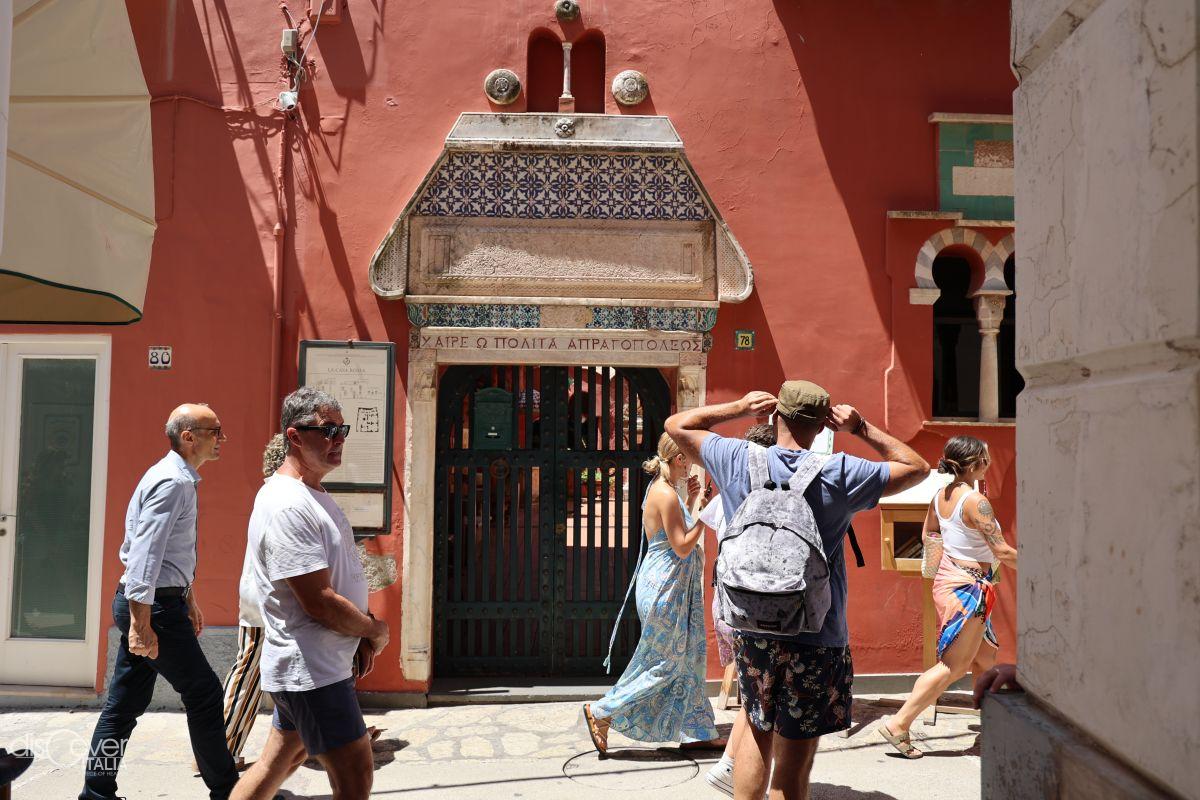“Kaire ‘o polita apragopoleos”, “Hello, citizen of the land of idleness.” For the welcome sign on the entrance of his eccentric house in Capri, Colonel John Clay MacKowen had chosen ancient Greek and evoked the nickname "apragopolis", or "island of sweet doing nothing" with which the emperor Augustus loved to define Capri to which he was so attached. All clear references to his great passion for archaeology.
For this reason, he had decided to move to Italy and in particular to the island favored by the Roman emperors from New Orleans, where he had practiced as a doctor and where he had fought in the Southern army during the American Civil War. In Capri, the colonel stopped to put down roots. There he met Maria Cimino, with whom he lived for the entire Capri period and with whom he had a daughter, Giulia. And there, in the heart of Anacapri, he dedicated himself to the construction of a building representative of his personality and all his passions. The result of a construction effort that lasted from 1876 to 1899 was, therefore, one of the most particular and recognizable buildings on the island, soon identified as Casa Rossa, from the Pompeian red that distinguished it, then as today, in the whiteness of the surrounding architecture.
The area on which the new building was built was already occupied by a fifteenth-century Aragonese tower, the remains of which can still be seen behind the courtyard, which inspired the architectural choice of an eclectic style, which included several from various eras. Crenellated structures of medieval style, columns and ancient marble fragments integrated into the construction both inside and outside, mullioned windows with marble decorations, Moorish and esoteric elements, all composed in a peculiar harmony of undisputed charm.
In the years spent on Capri, MacKowen cultivated his love for archeology on the island's sites, where he recovered various finds that enriched his collection, kept in his new palace. With the knowledge of the island that he had acquired, he was able to publish the first monograph dedicated to the Blue Island in 1884.
Once the colonel returned to America in 1901, where he lost his life during a firefight, the house passed to his heirs and, later, to other private owners, before being acquired by the Superintendency for Architectural Heritage and Landscape, which provided to its complete restoration as an exhibition space, then entrusting it to the Municipality of Anacapri.
In 2003 the Municipality purchased the prestigious collection of paintings by the Raskovich brothers, successfully exhibited at the Grand Hotel Quisisana. These are oils and watercolors that illustrate scenes of daily life and Capri traditions, panoramic places and paths, churches, ancient houses and picturesque corners, all precious testimonies of a reality that has partially disappeared. These works constitute the nucleus of the art gallery created inside the Casa Rossa, where the permanent exhibition "The painted island: pictorial journey to Capri and Anacapri between the nineteenth and twentieth centuries" is set up, with paintings by Barrett, De Montalant, Carabain, Giordano, Federico, Casciaro, Brancaccio, Ferrarini, Hay, Vertunni, Carelli, Sain, Payton Reid, Lovatti, Coleman, Gonsalvo and Gabriele Carelli.
In the internal courtyard, around which all the covered spaces of the building are arranged, there is an antiquarium with finds from the Roman era (in particular, fragments of sculptures and epigraphs found in Villa Damecuta and the statue of a priestess from the 1st century), Egyptian artefacts and medieval bas-reliefs recovered on site or the result of the colonel's travels.
Since 2008, the three mutilated statues found in the Blue Grotto between 1964 and 1974 have also been on display in the museum house, one depicting Neptune and the other two the son of the sea god, Triton.




Comments powered by CComment